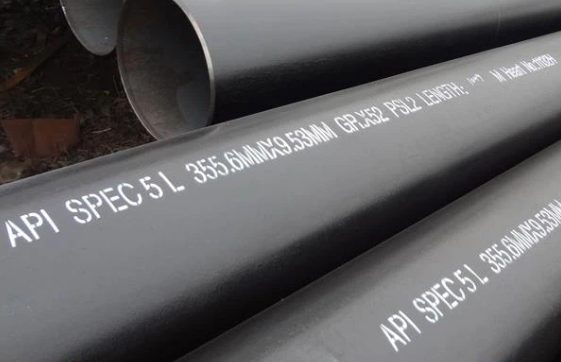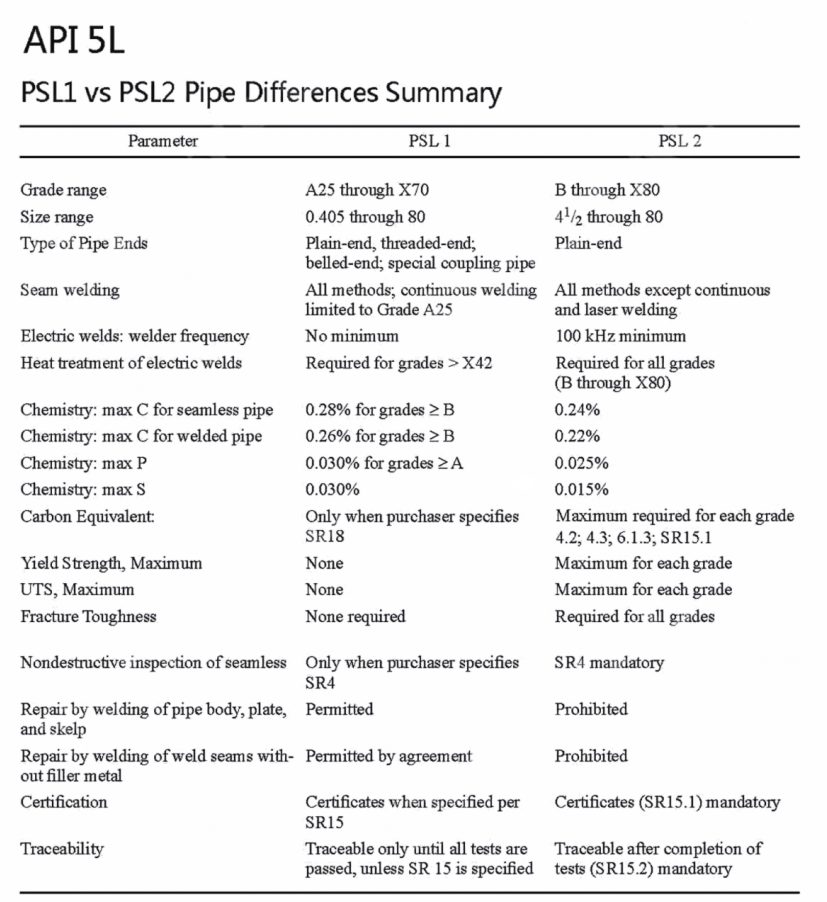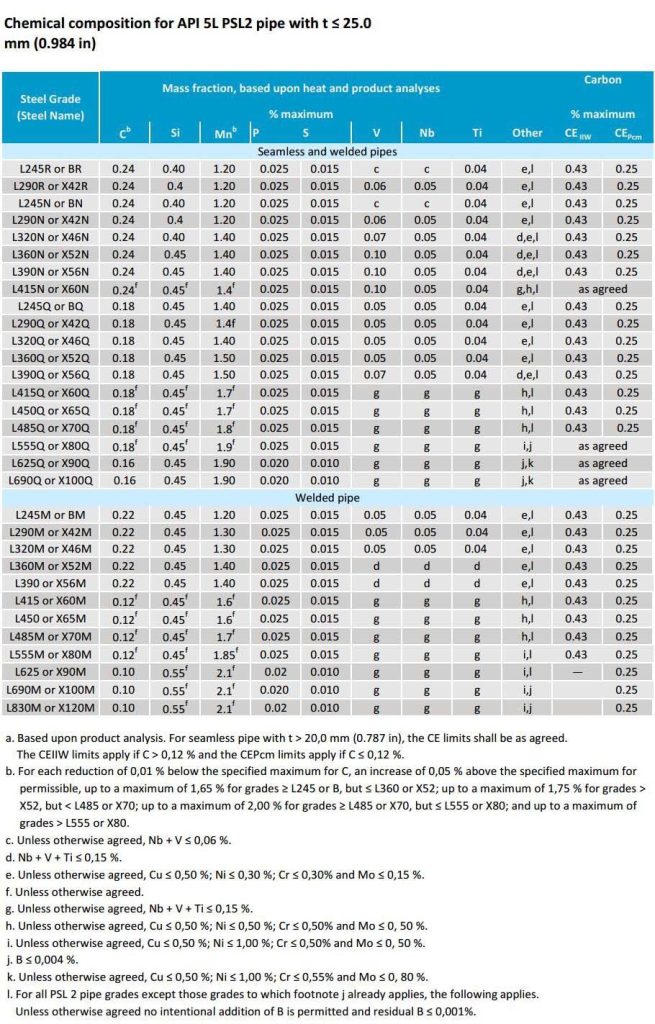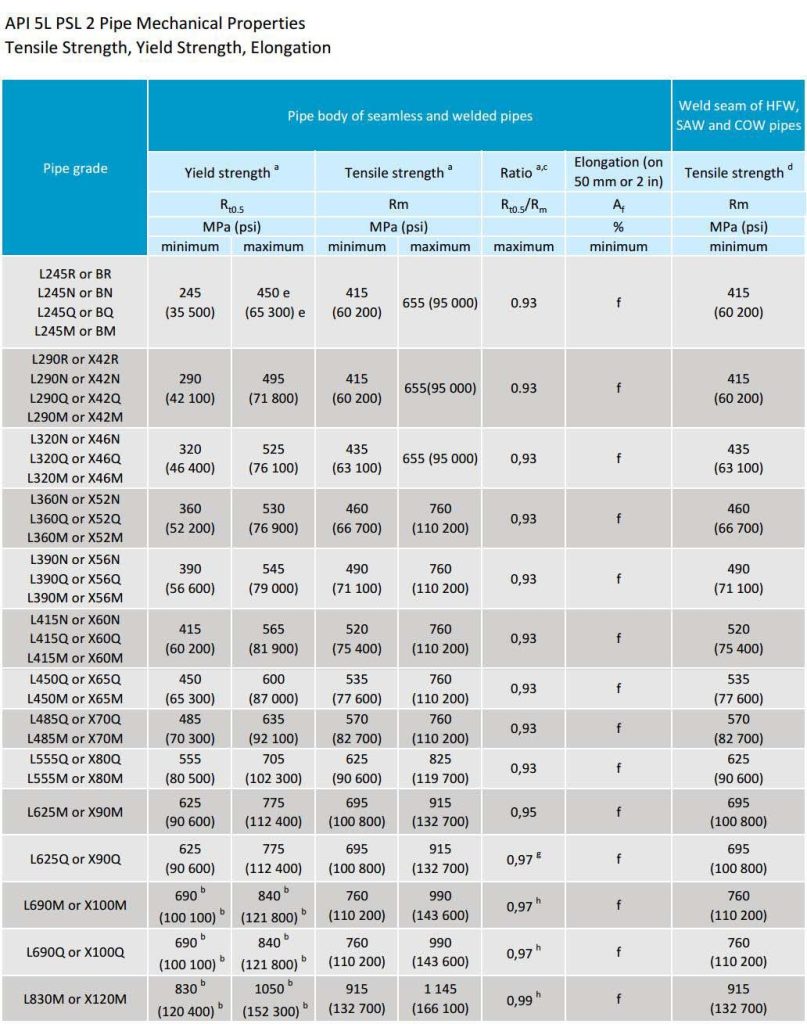All grades of API 5L line pipe, whether seamless or welded, are classified into two product specifications: PSL1 and PSL2. These specifications vary in terms of their chemical composition, manufacturing methods, mechanical properties, heat treatment procedures, testing records, and traceability.
In API 5L, the Product Standard Level (PSL) serves as a shorthand for quality classification, with PSL1 and PSL2 denoting different quality standards for line pipes. PSL2 surpasses PSL1 in various aspects: not only are inspection standards distinct, but chemical properties and mechanical strength standards also differ. Therefore, when ordering API 5L line pipes, it's crucial to clearly specify the size, grades, and the desired production standard level—whether PSL1 or PSL2.
PSL2 imposes stricter criteria than PSL1 across chemical properties, tensile strength, non-destructive testing, and impact testing.

Diverse impact testing methods are employed for PSL1 and PSL2:
- API 5L PSL1 steel line pipe is exempt from impact testing.
- In API 5L PSL2 steel line pipe, excluding Grade X80, all other grades necessitate impact testing at 0℃. The required average values of Akv are: longitudinal direction ≥ 41J, transverse direction ≥ 27J.
- For API 5L Grade X80 PSL2 line pipe, impact testing at 0℃ is mandatory for all sizes, with required average values of Akv: longitudinal direction ≥ 101J, transverse direction ≥ 68J.
Hydraulic testing differs between API 5L line pipe in PSL1 and PSL2:
- API 5L PSL2 line pipe requires hydraulic testing for each individual pipe. The API standard prohibits the substitution of Non-destructive testing for hydraulic testing, a notable distinction from Chinese standards. PSL1 does not necessitate Non-destructive testing, whereas PSL2 mandates it for each individual pipe.
Chemical composition varies between API 5L line pipe in PSL1 and PSL2:
- API 5L PSL1 and PSL2 line pipes exhibit differences in chemical composition and mechanical strength. Notably, API 5L PSL2 imposes restrictions on carbon equivalent content, applying different criteria based on the carbon mass fraction being greater than 0.12% or equal to/less than 0.12%. Maximum limits for tensile strength are specified for line pipe in PSL2. For further details, refer to API 5L Specification sections 9.2 and 9.3.











